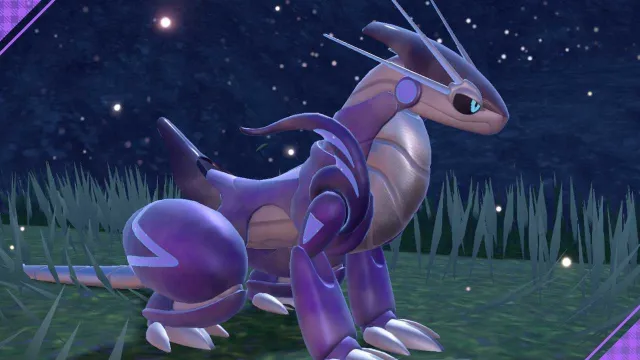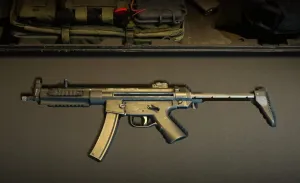So, you may have seen a popular PUBG streamer or YouTuber kill an enemy and make it look way too easy. However, thought and recoil precision is required more than you might think when it comes to combat in PlayerUnknown’s Battlegrounds.
The game has been out for a long time. Most players are aware of the variety of weapons and are comfortable with controlling them. With that in mind, I’m here to guide those who aren’t confident about recoil and how you can become a much better player.
Firstly, before we delve into weapon recoil, we need to identify the various types of weapons, and the differences between them.
5.56 Weapons
5.56 weapons are weapons that take 5.56mm bullets. This can range from DMRs (Designated Marksman Rifle), ARs (Assault Rifles) or LMGs (Light Machine Guns).
After the recent patch update a few months ago, 5.56 weapons are now more equal to their counterparts, such as the AKM or UMP9 which we’ll get into shortly.
The current weapons that demand 5.56mm bullets are as follows:
– M16A4 (AR)
– M416 (AR)
– SCAR-L (AR)
– Mini 14 (DMR)
– QBZ95 (AR)
– QBU (DMR, not yet released)


5.56 weapons are the most popular choice over the other parties due to their fair distribution of attributes. However, other selections of weapons such as 7.62, have better traits than others. It’s your choice to find which one best suits your playstyle in PUBG.
7.62 weapons deal much more damage than other weapons, though they lack in firing speed compared to the other weapons. Crate weapons are excluded from this guide.
The current weapons that take 7.62:
– AKM (AR)
– Kar98k (SR)
– M24 (SR)
– R1895 (Pistol)
– SKS (DMR)
– DP-28 (AR)
– SLR (DMR)


Some SMGs (Sub-Machine Guns), pistols, and silenced sniper, VSS, all take 9mm ammo. 9mm weapons deal less damage, but the recoil is much easier to control, giving higher accuracy on your shots.
The current weapons that take 9mm:
– P18C (Pistol)
– P92 (Pistol)
– Micro Uzi (SMG)
– UMP9 (SMG)
– VSS (SR)


I’ll talk more about shotguns in another post, so stay tuned! But, the remaining ammo type is .45 ACP. The Tommy gun, Vector, and P1911 all take this ammo although damage and recoil are out of the equation for these weapons. They make up for their disadvantages with a higher bullet spread and firing speed.
In conclusion, each weapon type in PUBG serves a different purpose providing you use the weapon properly. You need to choose between: recoil, damage, bullet spread, and firing speed. Prioritise which attribute you want to inflict upon your enemy.
For example, spraying at an opponent with a Vector will deal less damage, but more bullets are hitting so it would be equal to a 7.62 taking a few shots. Though, you will use more ammo and have to focus more on recoil. It takes a while to get your head around, but once you’ve got an idea for what each type of weapon does, you will pick it up fast.
How to Control your Weapon’s Recoil
Let’s move onto the main part: How to control your recoil.
Before we go into grips and stocks (which are attachments to help you with the recoil of your weapon), if it is your first time using a weapon, find a wall and select full auto or burst fire. Without moving your mouse, begin shooting at a wall. Try the same again, but as you start shooting, slowly bring your mouse down as if you are fighting with the controls. Keep doing this until you understand how much movement you need to add to your mouse. I learnt how recoil worked from using the AKM as it is a powerful weapon with a large kick-back.
Once you’ve found a weapon that you can control, you can implement your newly-found skill in shooting players. This can be difficult at first as most players panic at the sight of an enemy and just start shooting. Take your time and pretend the enemy is the wall you’ve been practising on.
I know it’s easy for me to sit here and tell you how to do it in text form. However, you need to start somewhere and believe me, recoil isn’t the easiest skill to learn – it takes practise and time.
When you’re confident with each weapon’s attributes and control, you can start adding attachments to your weapon depending on your playstyle.
Attachments that can help with recoil:
– Lower rail attachments (Angled foregrip, half grip, thumb grip, vertical foregrip, and light grip).
– Compensators (Available for ARs, SMGs, and Snipers).
– Stocks (Cheek pad, stock, and tactical stock).

These attachments give you an extra hand with controlling your recoil. Though, you will have to evenly distribute your attachments to work with the weapon you’re using and some weapons can only take a certain attachment. You will need to use your own experience to find what works best for you.
The diagram below gives you a rough idea of how recoil works inside PUBG. The test was conducted using the SCAR-L and each type of lower rail attachment:

While this diagram doesn’t show all of the weapons in PUBG, it gives you a rough idea of what each lower rail attachment does. Your job now is to move your mouse downwards whilst shooting to control the lift of the gun.
In my experience, I believe that using the AKM with a compensator is the best way to learn how recoil works. However, this is merely my personal opinion and by all means, use whichever gun feels most comfortable to you.
Overall, your choice of weapon is also highly dependent on your playstyle. If you drop at hot locations, fully automatic assault rifles with an angled foregrip or half-grip are your best bet. However, if you’re more of a passive player that stays out of the way of danger, you’ll be better off with an AR, DMR, or even sniper with various vertical grips and stocks to ensure your one-taps are accurate.
Hopefully, you’ve learnt something from this guide and if you’d like to see more guides on PUBG, let us know in the comments!









